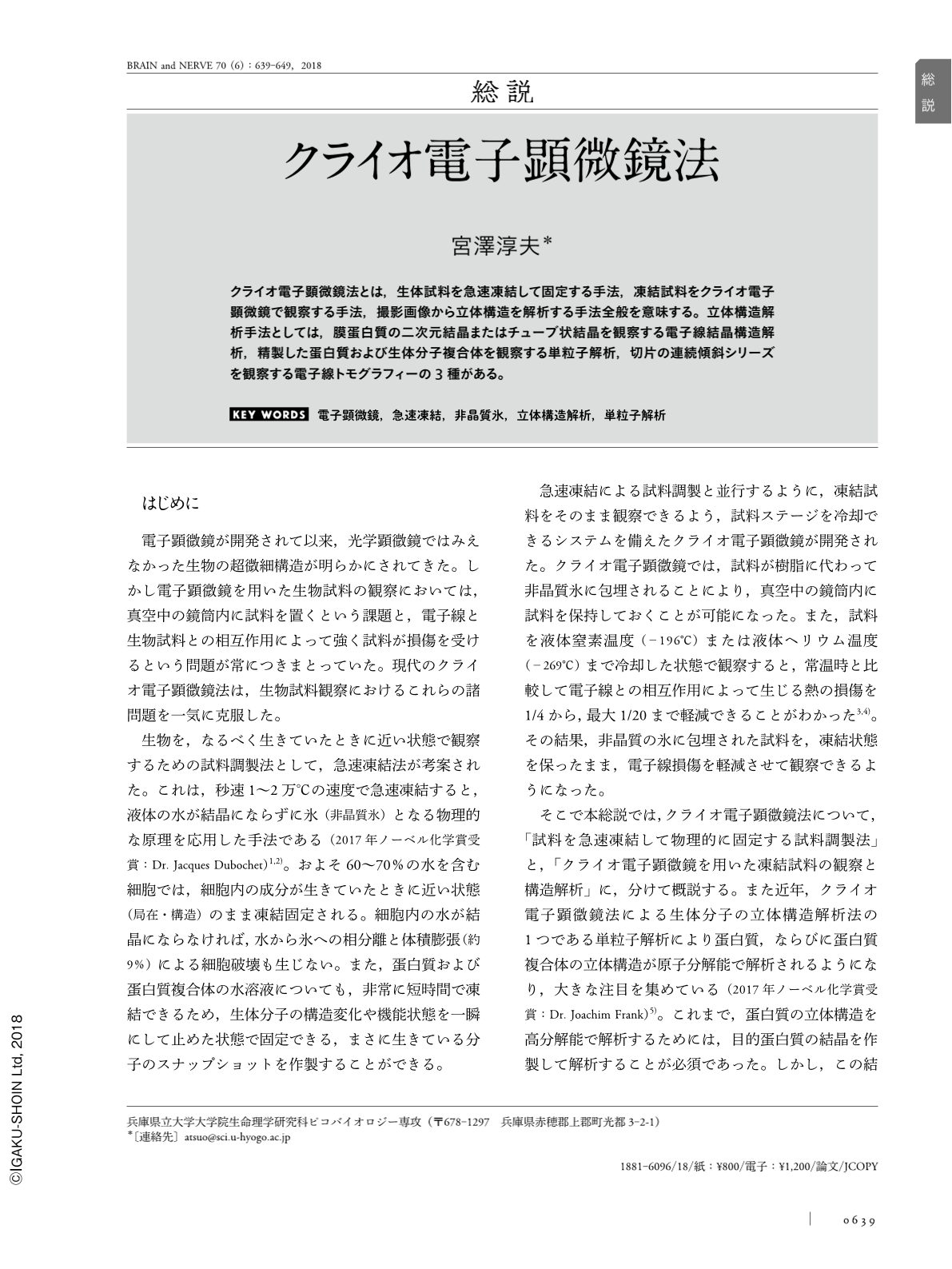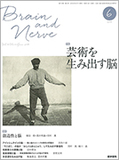Japanese
English
- 有料閲覧
- Abstract 文献概要
- 1ページ目 Look Inside
- 参考文献 Reference
クライオ電子顕微鏡法とは,生体試料を急速凍結して固定する手法,凍結試料をクライオ電子顕微鏡で観察する手法,撮影画像から立体構造を解析する手法全般を意味する。立体構造解析手法としては,膜蛋白質の二次元結晶またはチューブ状結晶を観察する電子線結晶構造解析,精製した蛋白質および生体分子複合体を観察する単粒子解析,切片の連続傾斜シリーズを観察する電子線トモグラフィーの3種がある。
Abstract
Cryo-electron microscopy (cryo-EM) includes three technical methods, (1) rapid freezing for vitreous ice-embedding, (2) observation of frozen hydrated specimens, and (3) image processing for three-dimensional structural analysis. The three-dimensional structural analysis can be performed in three different ways. Electron crystallography can decipher the structure of membrane proteins at the highest resolution (atomic level). Single particle analysis now allows the determiration of the structure of highly purified proteins and complexes (non-crystalline biomolecules) in solution at the near-atomic level. Electron tomography can reveal the three-dimensional structure of an ultrathin-section of the cells and/or tissues. The resolution of the structure obtained by electron tomography is not very high (nm level), however it is possible to reveal the individual structures of biomolecular assemblies or cellular organelles, in close-to-native condition in the cell. A technical development for cryo-EM should be the introduction of a new CMOS camera for the direct detection of electrons. Using such camera, a short movie (usually 2-3 seconds), comprising numerous images with a few hundred milliseconds exposure each can be recorded. Such a movie has a demonstrated value, as it can compensate for the specimen motion induced by irradiation of electron beam. Improvements in image processing algorithms and computer programs are also essential for achieving three-dimensional structures at a better resolution.

Copyright © 2018, Igaku-Shoin Ltd. All rights reserved.


